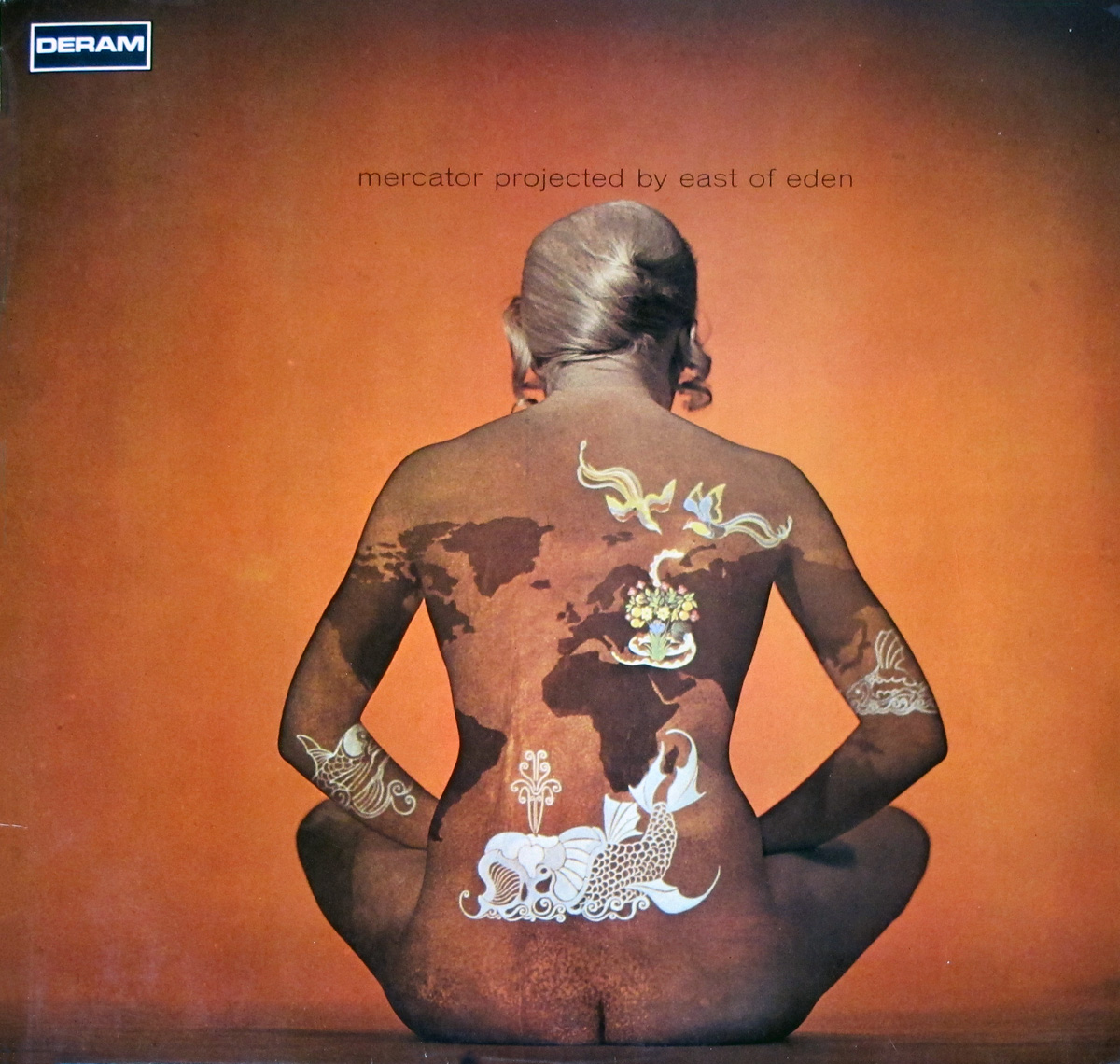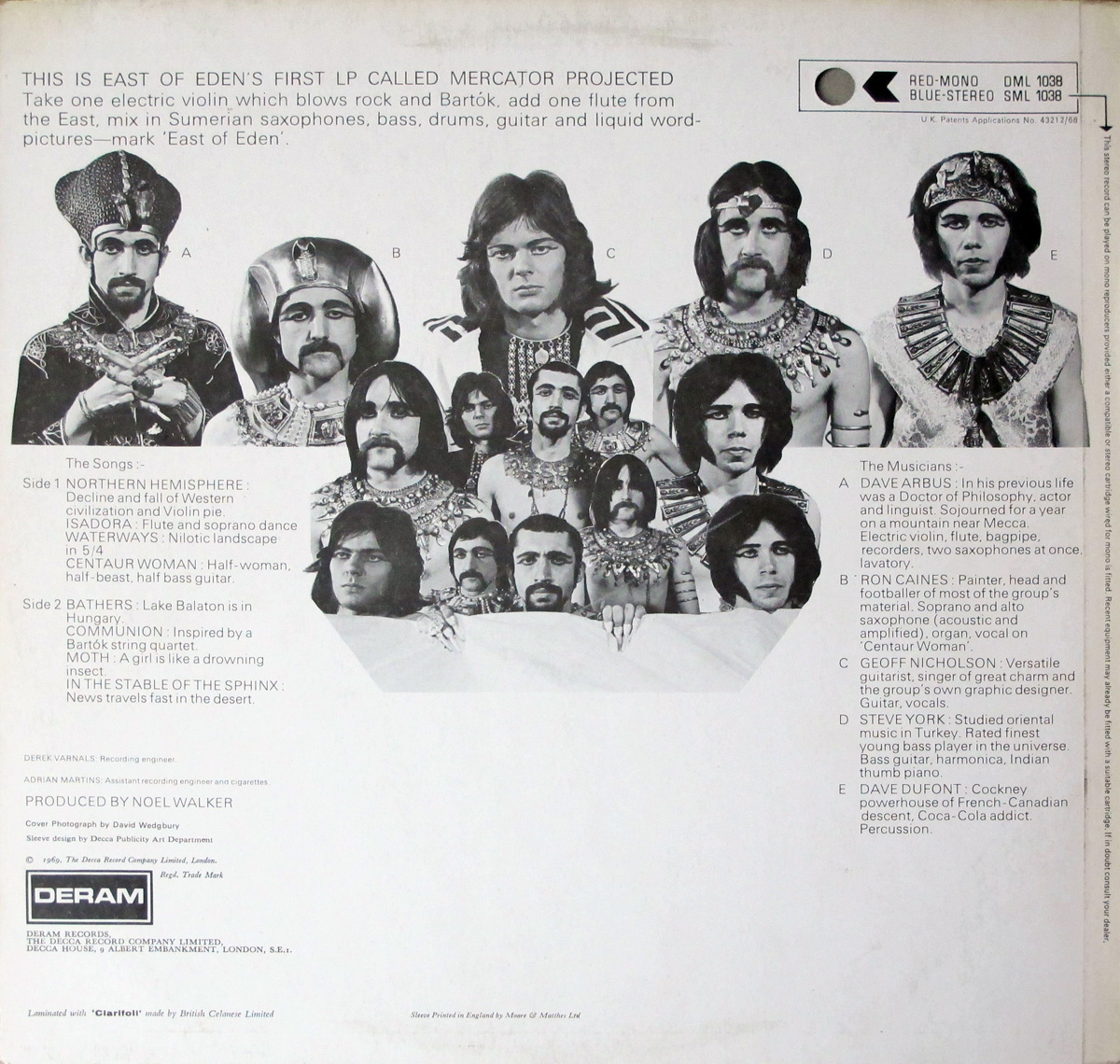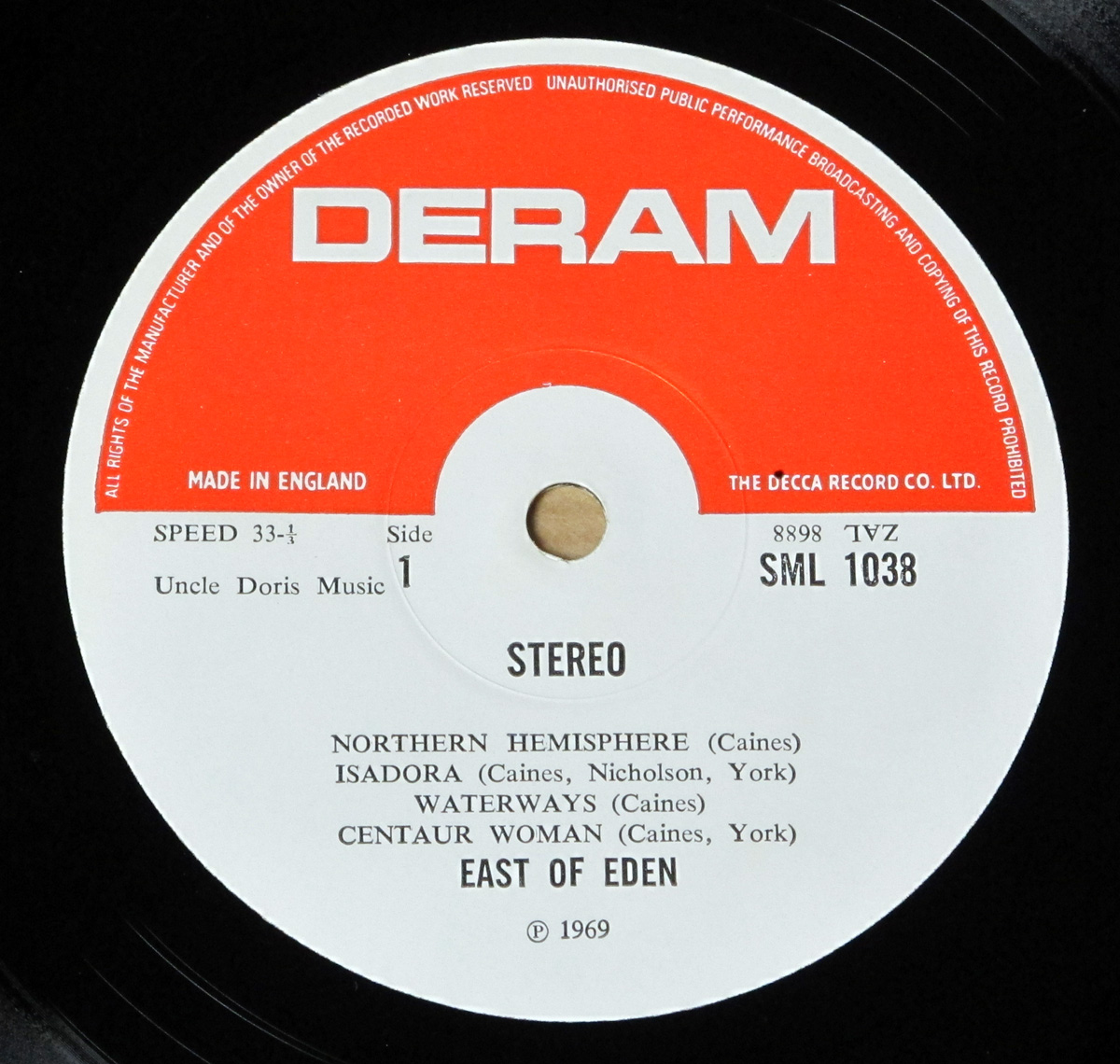Album Back Cover Description:
The back cover of Mercator Projected by East of Eden features a black-and-white collage of band members labeled with letters (A-E), each dressed in ornate, culturally inspired costumes. At the top, an introduction describes the album as East of Eden’s first LP, blending electric violin, rock, Bartók influences, and Eastern flute, with saxophones, bass, drums, and “liquid word-pictures.”
To the right, the musicians are identified with these descriptions:
saxophones, bass, drums, and “liquid word-pictures.”
A. Dave Arbus: “In his previous life was a Doctor of Philosophy, actor and linguist. Sojourned for a year on a mountain near Mecca. Electric violin, flute, bagpipes, recorders, two saxophones at once, lavatory.”
saxophones, bass, drums, and “liquid word-pictures.”
B. Ron Caines: “Painter, head and footballer of most of the group’s material. Soprano and alto saxophone (acoustic and amplified), organ, vocal on ‘Centaur Woman’.”
saxophones, bass, drums, and “liquid word-pictures.”
C. Geoff Nicholson: “Versatile guitarist, singer of great charm and the group’s own graphic designer. Guitar, vocal.”
saxophones, bass, drums, and “liquid word-pictures.”
D. Steve York: “Studied oriental music in Turkey. Heaviest bass player in the universe. Bass guitar, harmonica, Indian thumb piano.”
saxophones, bass, drums, and “liquid word-pictures.”
E. Dave Dufort: “Cockney powerhouse of French-Canadian descent, Coca-Cola addict. Percussion.”
saxophones, bass, drums, and “liquid word-pictures.”
Below these summaries, the album tracklist is displayed.
saxophones, bass, drums, and “liquid word-pictures.”
At the bottom, production credits list Noel Walker as producer, cover photography by David Wedgbury, and sleeve design by Derek Richards. The Deram logo, in bold, confirms the album’s 1969 release under this label.
|


